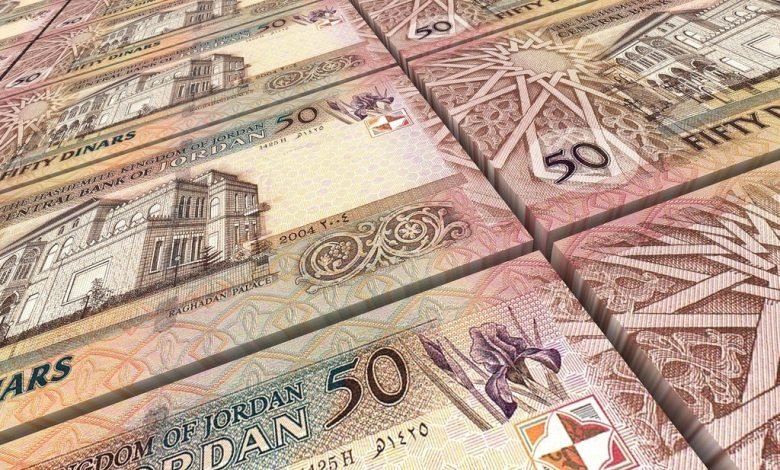
By : Salameh Darawi
Jordan Daily -Since 1995, Jordan has maintained a fixed exchange rate regime, officially pegging the Jordanian Dinar (JOD) to the U.S. Dollar at a rate of 0.709 JOD per USD. This strategic decision has served as a cornerstone of the country’s monetary stability, fostering an environment of financial predictability and reinforcing confidence among investors, businesses, and individuals alike.
The significance of this policy is amplified in light of the considerable volatility that major global currencies—including the U.S. Dollar—have experienced over the past decades. Unlike what some might assume, the value of the U.S. Dollar is not set by a direct decree from the Federal Reserve or any governmental body. Rather, it is shaped by the dynamics of global supply and demand, influenced by a variety of factors such as interest rate differentials, macroeconomic indicators, capital flows, investor sentiment, and forward-looking expectations.
While the Federal Reserve independently manages monetary policy, it does not directly control the dollar’s exchange rate against other currencies. Instead, the dollar fluctuates naturally within a free-market system. Since the dinar’s peg was introduced, the dollar has gone through multiple cycles of appreciation and depreciation. For instance, it strengthened in the late 1990s due to a booming U.S. economy and increased capital inflows, then weakened in the early 2000s due to internal fiscal imbalances. After the global financial crisis, it regained strength as a safe-haven asset. Most recently, between 2022 and 2025, the dollar appreciated again amid a tightening U.S. monetary policy and increased demand for dollar-denominated assets.
These fluctuations, far from being signs of weakness, are inherent in a flexible exchange rate system. More importantly, they have no bearing on the credibility or stability of Jordan’s fixed peg. The Jordanian Dinar remains unwaveringly tied to the U.S. Dollar, irrespective of the dollar’s movements against other global currencies. This stability not only protects domestic savings but also provides a reliable foundation for long-term financial and economic planning.
Over the decades, the Dinar has proven itself a vital pillar of macroeconomic stability—a safeguard during periods of regional and global turbulence. Jordan’s experience mirrors that of approximately 40 other countries, including members of the Gulf Cooperation Council such as Saudi Arabia, the United Arab Emirates, Qatar, and Bahrain, all of which maintain fixed exchange rates to the U.S. Dollar. These countries, like Jordan, recognize the strategic importance of anchoring their currencies to a strong, globally dominant reserve currency to ensure price stability, minimize financial risks, and bolster investor confidence.
The resilience of this policy has been particularly evident in times of crisis. During the 2008 global financial meltdown, the COVID-19 pandemic, and the recent wave of global monetary tightening, the Dinar held firm. Backed by substantial foreign currency reserves—which reached $22 billion as of March 2025—and prudent economic governance, the Central Bank of Jordan successfully shielded the economy from external shocks. In fact, the country recorded over $1.6 billion in net foreign direct investment in 2024, maintained positive capital flows, and kept inflation contained at 2.2% at the beginning of 2025. Moreover, real economic growth reached 2.5% in 2024 without triggering inflationary pressures.
A stable exchange rate is crucial for investor confidence. It reduces imported inflation, supports price stability, and creates a conducive environment for strategic, long-term economic planning. In a small, open, and import-dependent economy like Jordan’s, exchange rate stability is not merely advantageous—it is essential. It protects lower-income groups from the volatility of global markets, anchors inflation expectations, and sustains both domestic and external demand.
From a fiscal perspective, currency stability offers further benefits. It enhances the government’s ability to draft accurate budgets and execute spending plans without the need for costly hedging against currency fluctuations. Additionally, it reduces the servicing cost of public debt—especially debt denominated in foreign currency—thus freeing up fiscal space for critical investments in health, education, and infrastructure.
International credit rating agencies continue to value Jordan’s monetary stability as a key component of its sovereign credit profile. The Central Bank’s credibility and disciplined monetary strategy have helped the country maintain a relatively stable credit rating, allowing access to international capital markets on favorable terms.
Beyond stability, the dinar’s resilience has spurred innovation. The Central Bank has consistently demonstrated effective reserve management, agile policy formulation, and a forward-looking approach that embraces digital transformation and promotes financial inclusion across the banking and financial system.
Ultimately, the stability of the Dinar is a reflection of strong national institutions. At the heart of this framework stands the Central Bank of Jordan—an institution marked by credibility, professionalism, and sound governance. Its commitment has transformed monetary stability from a mere objective into a sustainable national achievement, underpinning Jordan’s economic resilience and readiness for future challenges.

